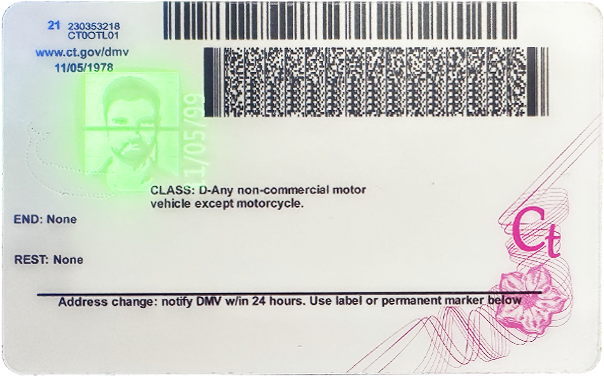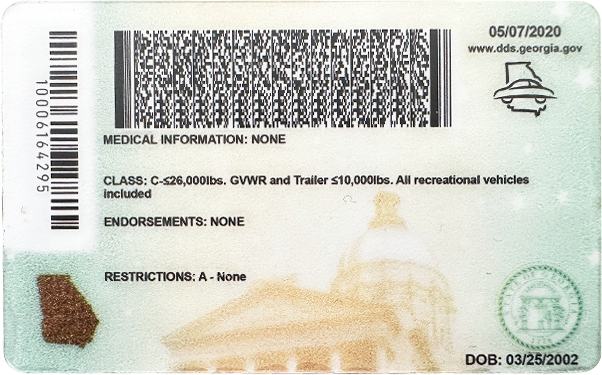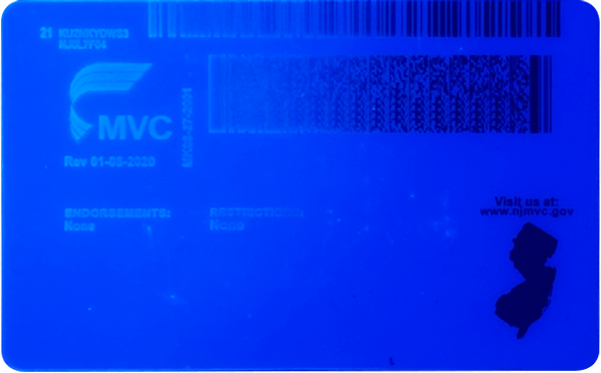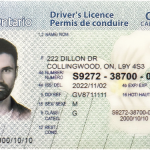Tattooing is a popular form of self – expression, but it is a regulated activity, especially when it comes to the age of the customer. In most places, it is illegal to tattoo a minor, and driver’s licenses are a common form of identification used by tattoo parlors to verify a customer’s age. Here’s how tattoo parlors typically check for customer’s driver’s licenses.
Initial Visual Inspection
The first step in the process is a simple visual inspection. Tattoo artists will pick up the driver’s license and quickly scan it for several key elements. They will look at the photo on the license to ensure that it matches the person standing in front of them. This includes checking the facial features, hair color, and general appearance. A significant mismatch could indicate that the license does not belong to the customer.
They also check the expiration date of the license. An expired license may not be a reliable form of identification, and in some cases, using an expired license for identification purposes may be illegal. The artist will ensure that the license is still valid and has not passed its expiration date.

Verifying the Age Information
The most crucial aspect for tattoo parlors is to determine the customer’s age. They will carefully examine the date of birth printed on the driver’s license. By subtracting the date of birth from the current date, they can accurately calculate the customer’s age. In most jurisdictions, the legal age for getting a tattoo without parental consent is 18. If the calculated age is below 18, the tattoo parlor will not proceed with the tattooing process.
Tattoo artists are also trained to be aware of any alterations or tampering on the license related to the date – of – birth field. They will look for signs of scratched – off or re – printed numbers, which could be an attempt to falsify the age. If any such irregularities are suspected, they will take further steps to verify the license’s authenticity.
Checking for Authenticity Features
Modern driver’s licenses come with a variety of security features to prevent forgery. Tattoo parlors are familiar with these features and will check for them. For example, many licenses have holographic images or overlays that are difficult to replicate. The artist will hold the license at different angles to see if the hologram changes or moves as expected.

Some licenses also have microprinting, which is text that is so small it can only be read with a magnifying glass. Tattoo parlors may use a magnifying device to check for the presence of microprinting in the appropriate areas of the license. Additionally, there may be UV – reactive elements on the license. Some tattoo parlors may use a UV light to see if these elements glow as they should, which is an indication of the license’s authenticity.
Cross – Referencing with State Databases (in Some Cases)
In some states or in situations where there is a high degree of suspicion about the license’s authenticity, tattoo parlors may have the option to cross – reference the license information with state databases. This is usually done through electronic means. However, this is not a common practice in all tattoo parlors, as it requires access to the appropriate technology and authorization from the state.
When cross – referencing, they can check if the license number, name, and date of birth match the records in the state’s database. If there are any discrepancies, it could be a sign that the license is either forged or has been tampered with.

Asking for Additional Identification (if Needed)
If there are any doubts about the driver’s license, such as a damaged photo or unclear age information, the tattoo parlor may ask the customer for additional forms of identification. This could include a passport, state – issued ID card, or military ID. These additional forms of identification can provide further verification of the customer’s identity and age.
The additional identification should also be subject to the same inspection process as the driver’s license. The tattoo parlor will check for authenticity features, match the photo to the customer, and verify the age information on the additional ID.
Common Problems and Solutions
Problem 1: Damaged Driver’s License
Sometimes, a customer may present a driver’s license that is damaged. The photo may be scratched, or the text may be partially unreadable. In such cases, the tattoo parlor has a few options. First, they can ask the customer if they have another form of identification, such as a passport or state – issued ID card. If the customer does not have any other identification, the tattoo parlor may try to contact the local Department of Motor Vehicles (DMV) to verify the license’s authenticity and the customer’s age based on the remaining legible information. However, this can be a time – consuming process, and in some cases, the tattoo parlor may choose not to proceed with the tattooing if the license is too damaged to be properly verified.
Problem 2: Suspected Forgery
If a tattoo parlor suspects that a driver’s license is forged, they should not proceed with the tattooing process. They should calmly inform the customer of their concerns and ask for additional forms of identification. If the customer is unable to provide valid additional identification or if the situation seems suspicious, the tattoo parlor may choose to contact the local law enforcement authorities. Law enforcement can take the license for further investigation and determine if it is indeed a forged document. Tattoo parlors should keep records of such incidents, including the customer’s name (if known), the details of the license, and the actions taken.
Problem 3: Inconsistent Information
There may be cases where the information on the driver’s license seems inconsistent. For example, the name on the license may not match the credit card the customer is using to pay for the tattoo, or there may be a difference in the address on the license and the address the customer provides. In such situations, the tattoo parlor should ask the customer for an explanation. The customer may have a legitimate reason for the difference, such as recently changing their address. However, if the explanations seem unsatisfactory or if the inconsistencies are too significant, the tattoo parlor may choose to ask for additional identification or not proceed with the tattooing until the matter is resolved.
Problem 4: Expired Driver’s License
An expired driver’s license is not a reliable form of identification for tattoo parlors. If a customer presents an expired license, the tattoo parlor should inform the customer that they need to provide a valid form of identification. This could be a new, non – expired driver’s license, a passport, or another state – issued ID card. The customer may argue that they are still the same person and their age has not changed, but the tattoo parlor must adhere to the rules regarding valid identification to ensure compliance with the law and protect themselves from potential legal issues.
Problem 5: Language Barriers
In some areas with a diverse population, tattoo parlors may encounter customers whose driver’s licenses are in a foreign language. This can make it difficult to verify the age and other important information. In such cases, the tattoo parlor may try to find a translator, either an in – house staff member who is bilingual or use an online translation service. They can also look for common elements on the license, such as the date of birth format, which may be similar across different countries. Additionally, they can ask the customer for additional identification in a language they are more familiar with, such as a passport from a country where the tattoo parlor staff can read the information more easily.
Fake ID Pricing
unit price: $109
| Order Quantity | Price Per Card |
|---|---|
| 2-3 | $89 |
| 4-9 | $69 |
| 10+ | $66 |



